Atosiban (CAS 90779-69-4) – Purity 99.23% | GMP Factory
$2.00
Atosiban is a synthetic peptide that selectively blocks oxytocin receptors to inhibit uterine contractions. Supplied at 99.23% purity and manufactured under GMP standards—perfect for research into preterm labor, uterine dynamics, and reproductive pharmacology. Laboratory use only.?For wholesale prices, other specifications and uses, please consult our staff?
描述
Atosiban (CAS 90779-69-4) is a synthetic cyclic peptide that acts as a selective oxytocin receptor antagonist. By competitively inhibiting oxytocin binding in uterine smooth muscle, Atosiban effectively suppresses uterine contractions. It’s widely used in laboratory studies focused on delaying preterm labor, understanding labor initiation mechanisms, and exploring reproductive endocrine regulation.
Manufactured under strict GMP guidelines and offering high purity (99.23%), this peptide provides reliable performance for experimental protocols in reproductive pharmacology.
Product Specifications
| Parameter | Details |
|---|---|
| Product Name | Atosiban |
| Synonyms | (None widely used) |
| CAS Number | 90779-69-4 |
| Purity | 99.23% (HPLC) |
| Molecular Formula | C??H??N?O?? |
| Molecular Weight | ~893 Da |
| Appearance | White to off-white lyophilized powder |
| Solubility | Soluble in aqueous solutions and lab buffers |
| Storage | –20 °C, dry and light-protected |
| GMP Compliance | Yes |
| Intended Use | Laboratory research use only |
Mechanism of Action & Research Applications
Atosiban competitively inhibits oxytocin receptors in the uterus, preventing oxytocin-induced muscle contraction. It alters downstream signaling by reducing intracellular calcium release and myosin phosphorylation. Key research applications include:
-
Preterm labor models: Simulating therapeutic interventions aimed at suppressing uterine overactivity.
-
Uterine physiology studies: Elucidating the roles of oxytocin receptors and uterine signaling pathways.
-
Hormonal regulation: Examining interactions between oxytocin, prostaglandins, and uterine contraction pathways.
-
In vitro contractility assays: Serving as a control in isolated smooth muscle or organ bath studies to assess contraceptive or tocolytic effects.
Side Effects (For Research Context Only)
Under controlled lab conditions, Atosiban treatment may result in:
-
Transient hypotension: Due to peripheral vasodilation in sensitive in vivo models.
-
Altered labor patterns: Studied in ex vivo perfused uterine models to assess timing and strength of contractions.
-
Feedback hormone response: Models might show increased basal oxytocin receptor expression after prolonged exposure, useful for research on receptor regulation.
-
Non-target effects: Potential effects on uterine blood flow and prostaglandin release, observed in perfusion or organ culture systems when exploring interrelated pathways.
These findings help deepen understanding of uterine contractile control and pharmacologic regulation. Always monitor dose and context-specific responses.
Disclaimer
Atosiban is strictly for laboratory research use only. It is not approved for human or veterinary therapeutic use, or for diagnosing conditions.
其他信息
| 重量 | 0.8 公斤 |
|---|---|
| 尺寸 | 26 × 23 × 26 厘米 |
A synthetic cyclic peptide that antagonizes uterine oxytocin receptors to suppress contractions.
It inhibits oxytocin binding, reducing calcium signaling and muscle contraction—ideal for preterm labor studies.
Includes experimental modeling of preterm labor suppression, uterine physiology, and studies of reproductive hormone pathways.
This product offers a high purity of 99.23%, produced under GMP-compliant conditions.
No. It is intended exclusively for laboratory research and not approved for medical use.
Watch for hypotension in vivo and compensatory hormonal responses over prolonged exposure.
Store at –20 °C in a light- and moisture-protected environment.
Yes, when properly stored, it remains stable for use in long-term uterine contraction assays.
Yes, guaranteed by GMP-compliant production processes.
Yes—it may modulate uterine prostaglandin release, making it useful to study interplay between oxytocin and prostaglandin-mediated contractile responses.



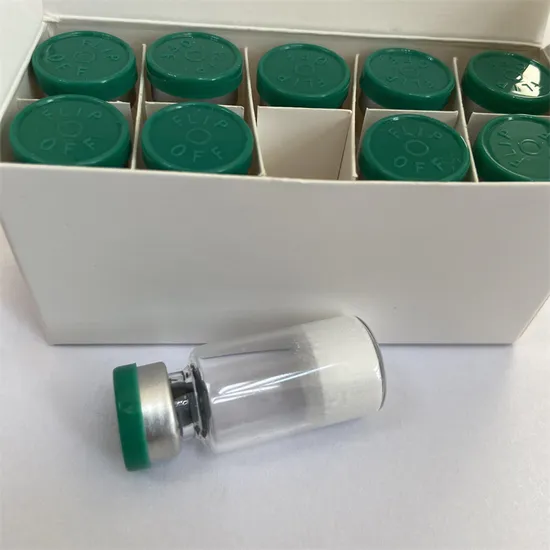



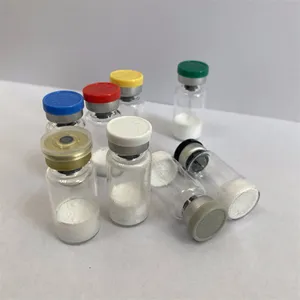


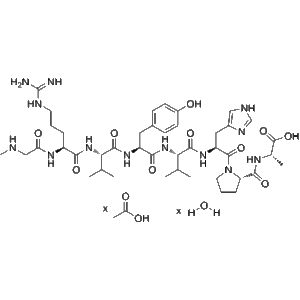

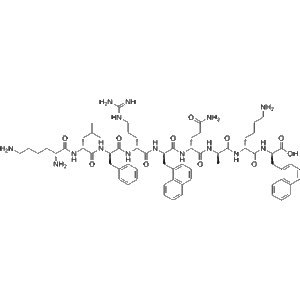
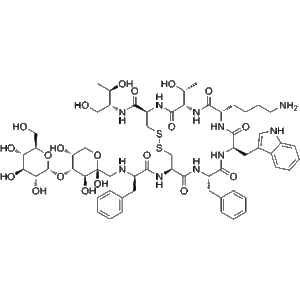
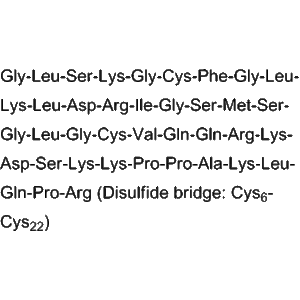
评价
目前还没有评价